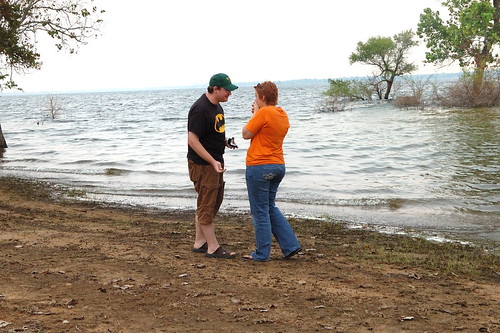Sunday, May 30, 2010
Friday, May 7, 2010
Best practices, templates, checklists and "our way"
Or, "how to ignore a cohesive way of doing things as an organization."
One of the bigger challenges of a growing company is developing a sense of self, of identity. For a city, it is having some defining element, some "thing", or in an oddly phrased but oft used statement "having a there THERE."
For a President, we call it "gravitas", and that might be the truly best way to describe it.
For an organization, it is about defining "how we do things HERE." Maybe it is an unrelenting willingness to work extra hours, maybe it is that no one leaves if someone else is working late and all chip in, maybe it is that everyone is a hardball negotiator.
For companies who make a living off of selling services, and doing so via formally written proposals this should inevitably result in having a "tao of writing proposals." There has to be some sort of a company-wide way of doing the basic, mechanical, and necessary things.
In my experience, the basic elements of this are having templates, checklists, and best practices. Or to others "the
Sure, they can innovate, they can improve, they can refine. These things are needed, desperately. But it is if value to the organization to know that a proposal will be run smoothly, and resemble the last several proposals. You need the commonality, the repeating themes and trends.
My employer is still at the beginning phases of that path. We have led several prososals, as a "prime". In our world, this means that we're working with other companies who will "subcontract" to us. Imagine if Microsoft and Macromedia teamed up to tie their software together. Obviously Microsoft is the 800 pound gorilla in that relationship. Well when you are the "prime", you're King Kong.
We've been King Kong a few times, it's gone well too. But we've done it only a few times, not enough so that all the major players in the company have led a major proposal, so we've had to learn a few lessons repeated times.
- Why would we want a checklist that tells us if we've met all the little teenie tiny details of the Request For Proposal (RFP)? Because if you don't hit them all, you can't win!
- Why would we want a template for developing our main selling points? Because it speeds the process, it provides consistency, and it helps you to use the past selling points that worked.
- Why would we want to have 2-5 standard ways of doing things? Because we've found they work for our company, the way we work, the way we deliver services to customers.
But we're still heading down that path. We're not there yet.
Helpful and great pictures, in order of appearance:
Thursday, May 6, 2010
Testing out Twitter's @anywhere feature
This SHOULD result in you being able to see a hover card when you mouse-over @ckstevenson.
Advice on implementing @Anywhere from the valuable Cool Tips N Tricks.
As he wrote, and tested out:
Here is an example of the @anywhere feature. Just move the mouse over @rahuljrark and you will see my username, some information and a Follow button to follow me on Twitter.
Wednesday, May 5, 2010
Subscribe to:
Comments (Atom)





